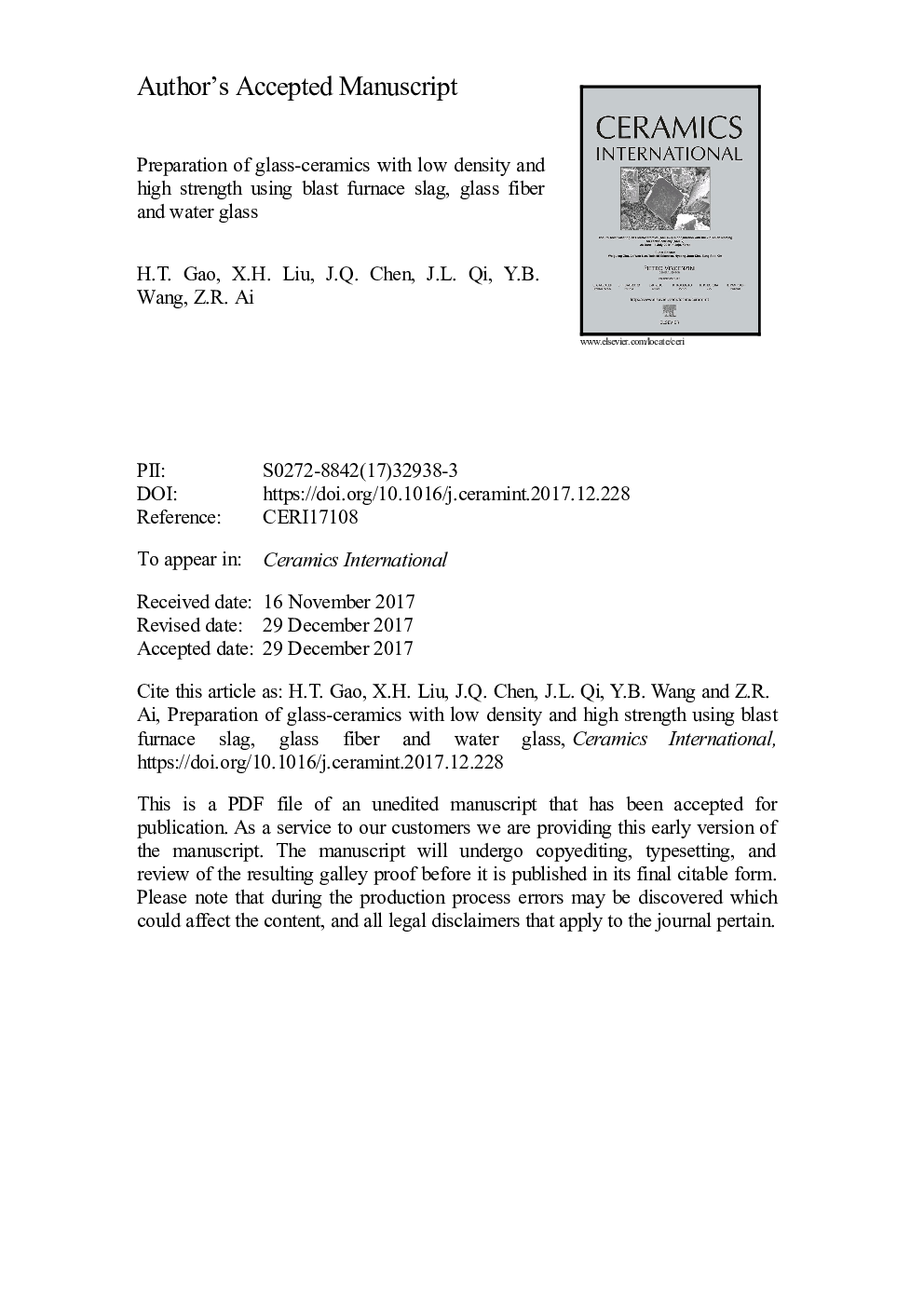| Article ID | Journal | Published Year | Pages | File Type |
|---|---|---|---|---|
| 7887582 | Ceramics International | 2018 | 30 Pages |
Abstract
To reduce the production costs of glass-ceramics and broaden the application field of solid waste in steel industry, low-density and high-strength glass-ceramics were produced by using blast furnace slag as the basic material, choosing glass fiber and water glass as the strengthening agents. The effects of glass fiber and water glass on the phase composition, microstructure, apparent density, water absorption and compressive strength of glass-ceramics were investigated. The results show that the rod structure of glass fiber can be retained in the sintered samples and high content of diopside and augite significantly improve the compressive strength of glass-ceramics. Tiny spherical crystalline phases can be obtained for the glass-ceramics soaked in the moderate concentration of water glass. The BGW-2 samples fabricated with 70% blast furnace slag, 30% glass fiber and 4% water glass, exhibit excellent comprehensive properties. The bulk density, water absorption and compressive strength of BGW-2 are 1.76Â g/cm3, 2.26% and 68Â MPa, respectively. Consequently, using blast furnace slag to prepare glass-ceramics can be another applicable way to utilize blast furnace slag efficiently.
Related Topics
Physical Sciences and Engineering
Materials Science
Ceramics and Composites
Authors
H.T. Gao, X.H. Liu, J.Q. Chen, J.L. Qi, Y.B. Wang, Z.R. Ai,
